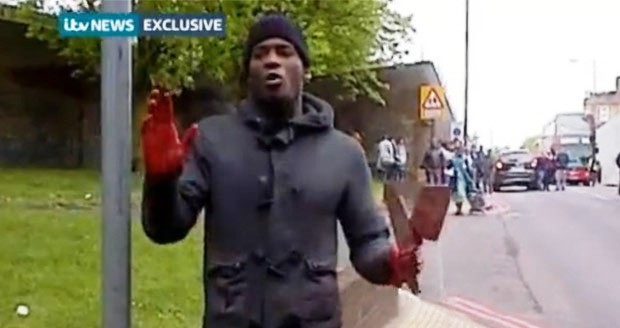On Wednesday a British soldier was ruthlessly run down and butchered by machete-wielding jihadists. Moments later, one of the bloody-handed attackers said on video that they wanted to start a war in Britain, warning “you people will never be safe,” and adding “we swear by almighty Allah, that we will never stop fighting you.” The soldier’s body lay bleeding in the background. The Washington Post front page headline for this shocking story: “Man killed in suspected terror attack.”
Videos By Rare
“Suspected” terror attack? Is there some doubt about it? This was a violent act in a peaceful neighborhood committed by self-confessed extremists seeking to make a political point through inspiring naked fear. Can this be anything other than terrorism?
The lack of critical judgment continued in the main body of the story, in which reporter Anthony Faiola wrote, “if confirmed as an act of terrorism….” Confirmed by whom? How confirmed? And why is confirmation needed? One of the attackers told the world he committed a terrorist act. That alone should be sufficient. Even if this man had not chillingly explained what he and his accomplice were in the midst of doing, the nature of the attack and eyewitness accounts of the assailants shouting the jihadist battle cry “Allahu akbar!” before commencing their grisly work should have been enough.
Official confirmation is not required to label a terrorist incident for what it is when the facts are plain. Governments do not hold a monopoly on categorizing acts of violence, nor should they. Administrations are not always objective, let alone honest, when it comes to highlighting terrorist victories on their watch. The November 2009 Ft. Hood Massacre was famously labeled an act of “workplace violence,” and the well-established facts pointing to shooter Nidal Hasan’s jihadist motives were omitted from the Army’s force protection review of the incident. The misrepresentations and deceptions surrounding the September 11, 2012 terrorist attack on the United States consulate in Benghazi, Libya were so extensive and calculated that they have generated a presidential-level scandal. And if the Obama administration could get away with calling the April 15, 2013 Boston Marathon bombings a series of man-caused, sports-related injuries, it would.
However, President Obama has lately showed some rare willingness to at least acknowledge the facts. On Thursday he said that “the terrorism we face is fueled by a common ideology – a belief by some extremists that Islam is in conflict with the United States and the West, and that violence against Western targets, including civilians, is justified in pursuit of a larger cause.” But he immediately added that “this ideology is based on a lie, for the United States is not at war with Islam” — which is not what he just said. He said the terrorists believe Islam is at war with us, which they do; and so long as they believe it, the war will continue. On this matter the jihadists and Mr. Obama simply have a difference of opinion on matters Islamic.
The reticence to call terror attacks what they plainly are springs partly from a misguided notion that there is something discriminatory in isolating jihadism as a motive. Massachusetts Governor Deval Patrick kept repeating he had “no idea” what led the Tsarnaev brothers to commit their heinous acts in Boston, when everyone following the story had a very fair and as it turned out accurate notion that they were jihadist radicals. It is one thing not to speculate on these matters, it is another to stubbornly deny reality.
Reportage on the four nights of riots in Stockholm, Sweden follows the same pattern. News stories mostly attribute the violence to youths, the unemployed or social castoffs. It takes a bit of digging to find out that the rioters are the offspring of unassimilated Muslim immigrants, mostly from Somalia. This could be a legitimate story-line, even for the mainstream media — investigating why the Somalis have not acculturated to Swedish life, the stresses they place on the Swedish social welfare system, or the attitudes of Swedes towards this separate nation living in their midst. But the press is so afraid to look at this issue frankly and honestly that after the first night of rioting, Swedish papers almost uniformly reported this as “youth violence” and ignored the actual cultural context. If you wanted to read the story of the lone policeman assailed by a mob, who fled for his life to cries of “Allahu akbar,” you had to get a paper from Norway.
Jihadist terrorism is a fact of modern life. Reporters should stop deferring to officialdom when discussing the issue. And they should not engage in self-censorship that conceals the root causes of social strife and political violence. Above all, use some critical judgment and common sense. When a man whose hands are freshly coated in a victim’s blood says on camera he is seeking to make war in the name of Allah on a society he loathes, he is not a “suspected terrorist.” He is a terrorist.
James S. Robbins is Deputy Editor of Rare. Follow him on Twitter @James_Robbins

